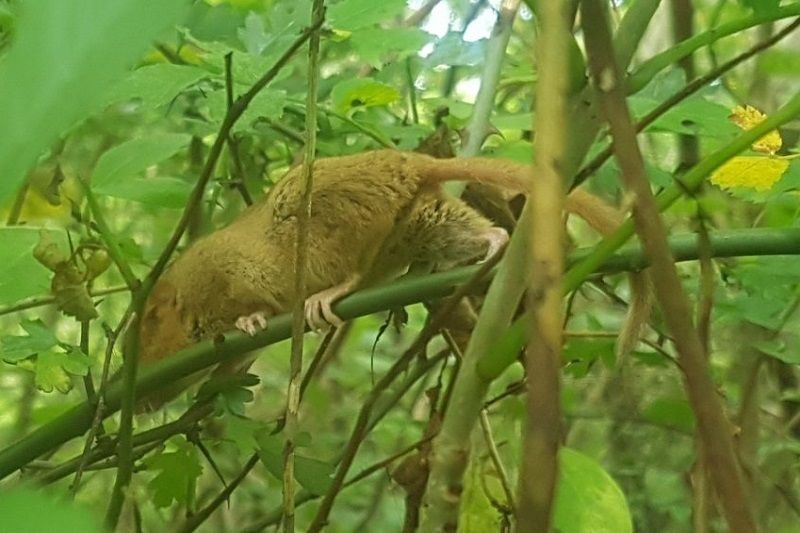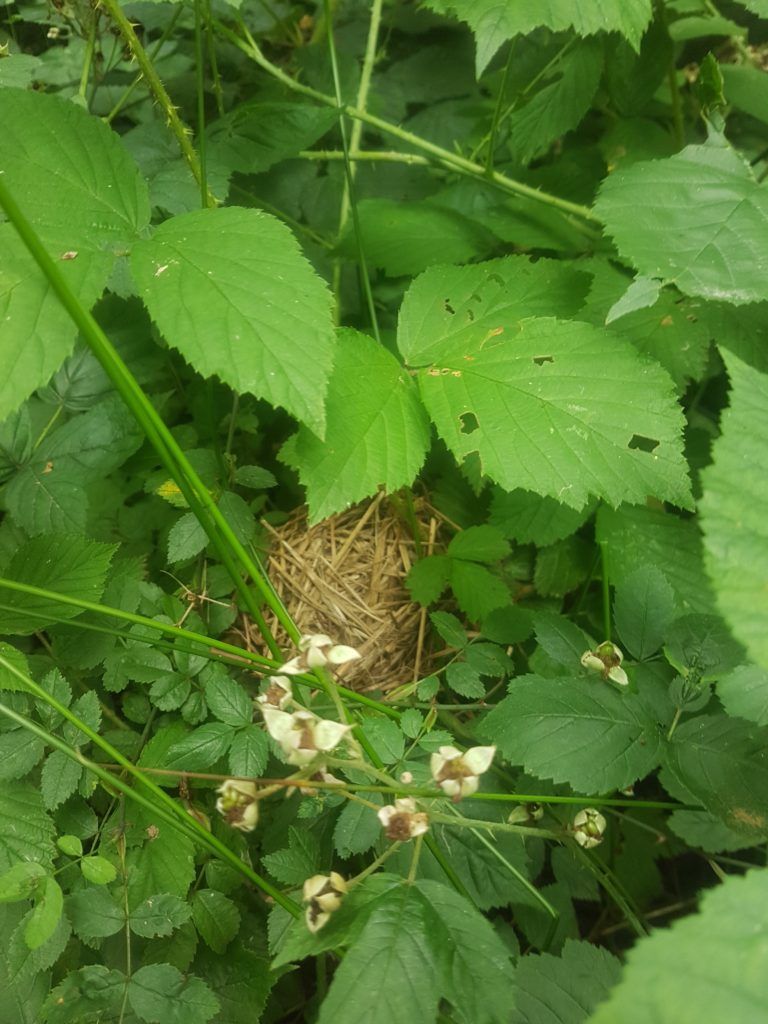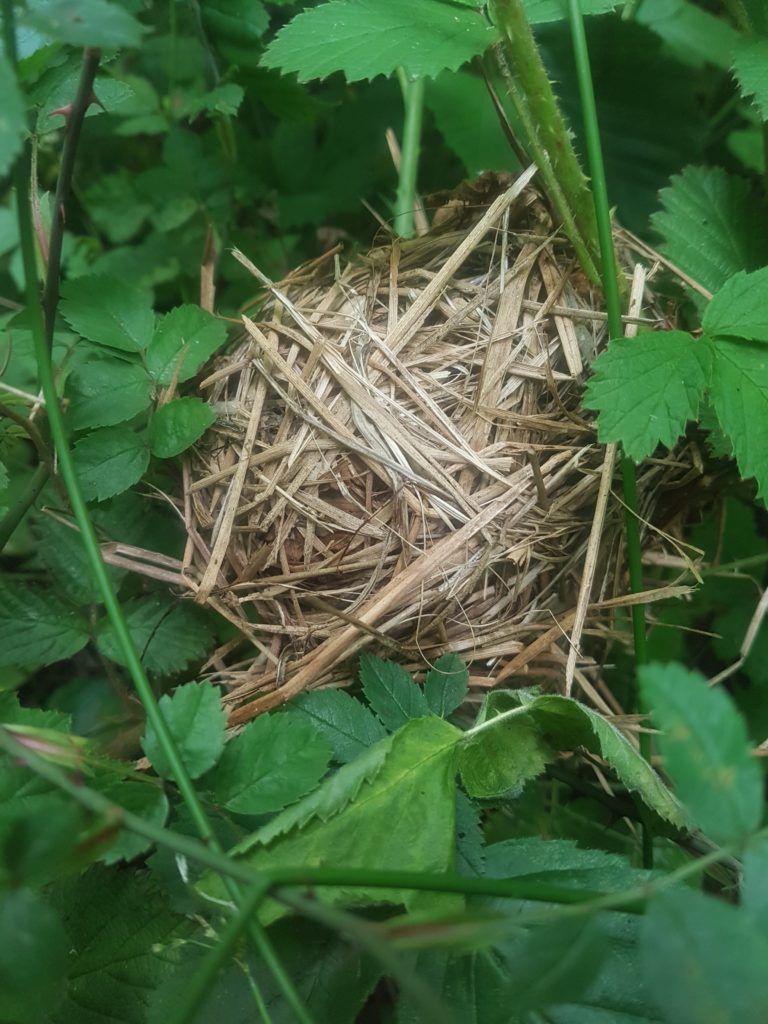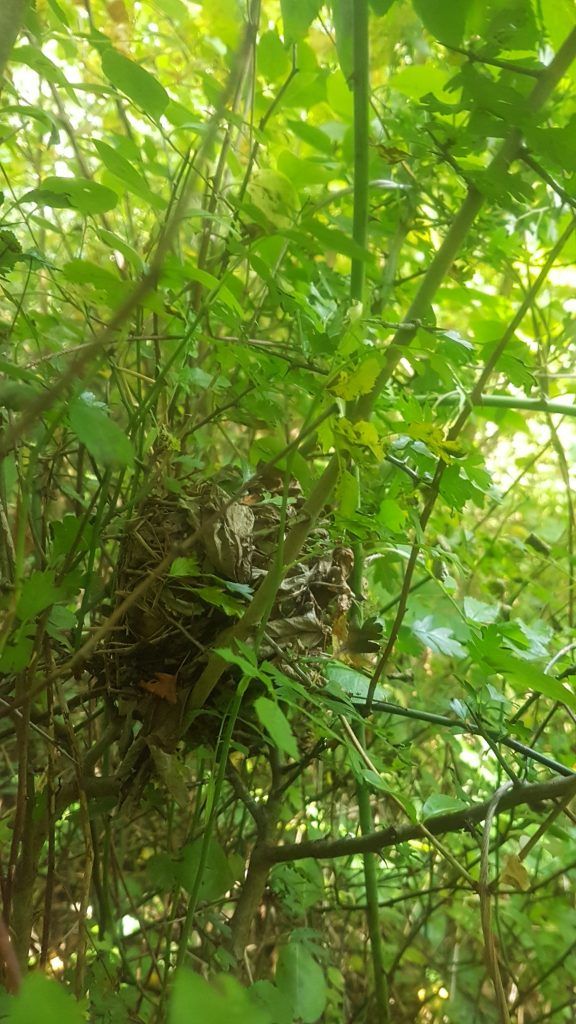An encounter with a dormouse
During a recent trip to one of our Nottinghamshire dormouse woodlands I happened to stumble upon another wild dormouse nest. It was hidden amongst a patch of bramble and rose scrub that was winding its way up a hawthorn tree, on the edge of a young coppice compartment. The nest itself was made predominantly of brown leaves around the exterior, with the occasional hint of stripped bark poking through. Typically, the core of a dormouse nest will contain a perfectly circular, woven structure. On this occasion I couldn’t investigate more closely because, just as I stepped towards it to get a closer look at the nest, an adult dormouse shot out.
A dormouse’s typical response is to pause, most often on the far side of the closest branch, trunk or twig. I always imagine them thinking ‘you can’t see me’, and quite often this is true. Dormouse do have a knack of blending into their environment. This particular dormouse, however, moved gingerly closer, gently winding its way across a tendril of rose. Its sticky paw pads perfectly adapted to a life traversing the most delicate of branches, high up in the canopy. Its placement in the vegetation gave me a perfect view of its underside and I could clearly see that the dormouse was female and, to my delight, heavily pregnant. After taking a couple of photographs I quietly backed away and left her in peace.

You need a keen eye for spotting wild dormouse nests
People have often asked me if I could train them to find wild dormouse nests. Honestly, I don’t think I could. It’s not something you can teach. I never go out purposely to find nests, they just seem to find me, crazy as it may sound. I think it’s an alertness, a sense, of intimately knowing your surroundings, noticing the subtle changes in the vegetation and, most importantly, understanding the ecological needs of dormice.
Wild nests aren’t simply a resting place, they’re also a sanctuary, providing protection from predators, therefore they’re often sited in dense, thorny vegetation. The most important factor is a nests’ proximity to food. Activity in such a small creature can be costly in terms of energy consumption, so most dormouse nests will be built very close to a food resource. As sequential feeders, dormice forage on a variety of foods as they become seasonably available. In the autumn, when I found this particular nest, they mostly feed on fruits and berries such as blackberries, guelder rose, dogwood and hawthorn, so it’s near these species that the dormouse is currently likely to be found.
A temporary structure
Wild dormouse nests come in many forms and sizes. They’re always cylindrical, however the materials used to build them vary according to the nests’ location and the vegetation present in the vicinity. For example, if a nest is constructed close to a patch of bracken, you’re likely to find a nest artistically formed out of bracken fronds. A dormouse building a nest in a hazel coppice will painstakingly strip the bark from the surrounding trees and weave its nest, whereas a nest hidden away in a nettle patch, at the edge of a grassy clearing, may well be composed of dried grasses.
Each one of these nests is a work of art and, although they’re crafted with such skill and precision, providing shelter from the elements, sadly, they ultimately fade away with time. Rarely does a wild nest last beyond a season, the materials gradually break down and return to the earth… until next year.
Written by Lorna Griffiths, Chair of the Nottinghamshire Dormouse Group.
Find the Nottinghamshire Dormouse Group at their website.



